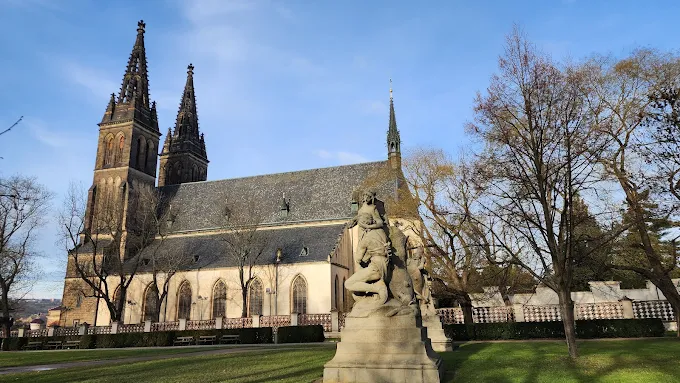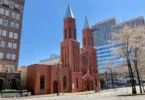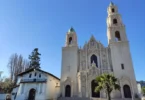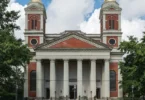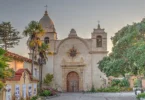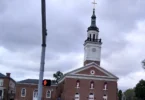Introduction
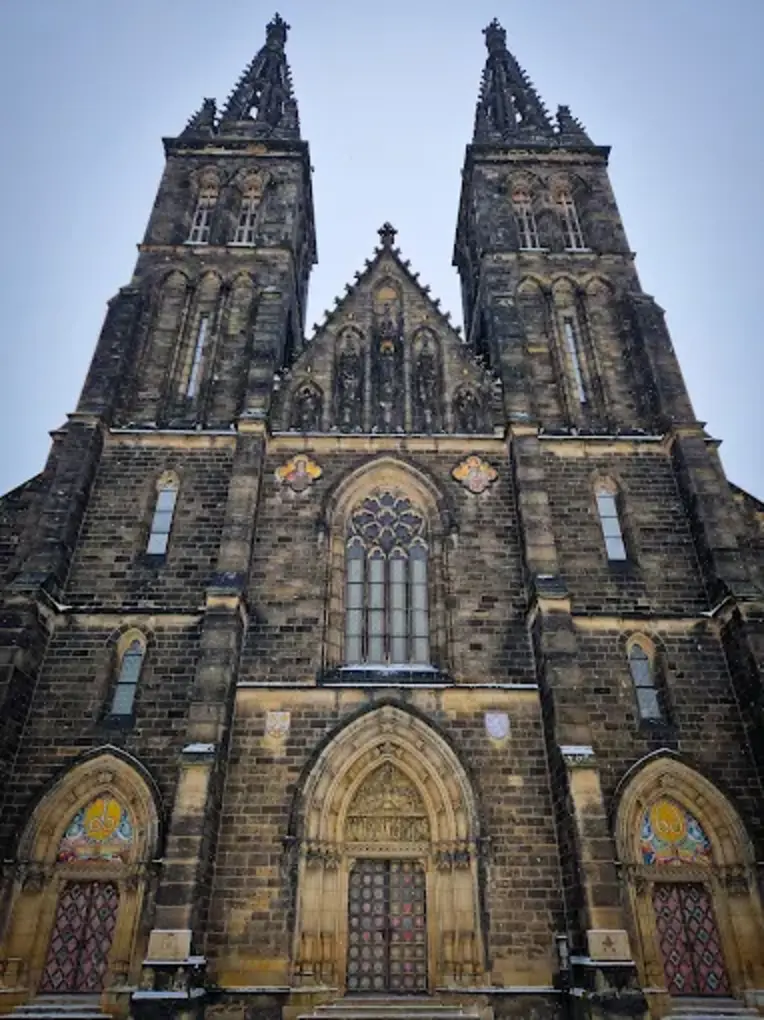
The Basilica of St.Peter and St. Paul stands proudly on the Vysehrad hill in Prague, overlooking the Vltava River. This impressive church has a long history, going back almost a thousand years. It was originally founded between 1070 and 1080 by King Vratislaus II of Bohemia as an early Romanesque basilica. Over time, the church has faced its share of challenges, including a devastating fire in 1249. After that, it was rebuilt several times, taking on Gothic elements during the reign of Charles IV and later Baroque touches in the early 1700s. What visitors see today is largely thanks to a dramatic neo-Gothic makeover from the late 19th and early 20th centuries. The 58-meter-tall twin towers dominate Prague’s skyline and can be seen from numerous locations along the river. A stunning stone mosaic catches the eye and increases the church’s grandeur above the main entrance. Additionally, the basilica has significant cultural significance. Behind it is a large park and the Vyehrad cemetery, where many well-known Czechs, like writer Karel apek and composer Antonn Dvoak, are buried. The church itself was raised to the status of a minor basilica by Pope John Paul II in 2003, marking its importance to both the religious and cultural heritage of the city. Inside, one of the most treasured pieces is a copy of the Gothic panel painting known as the Virgin Mary of Vyšehrad, dating back to the mid-14th century. This painting is among the oldest medieval artworks in the Czech lands. Due to the fact that people pray to her for rain during dry spells, it has been known as the Rain Madonna since 1638. The original painting is safely kept at the National Gallery. As a national cultural monument, the entire Vy’ehrad complex, including the basilica and cemetery, is protected. It’s a place full of history, beauty, and meaning a must-see for anyone visiting Prague who wants to connect with the city’s deep past.
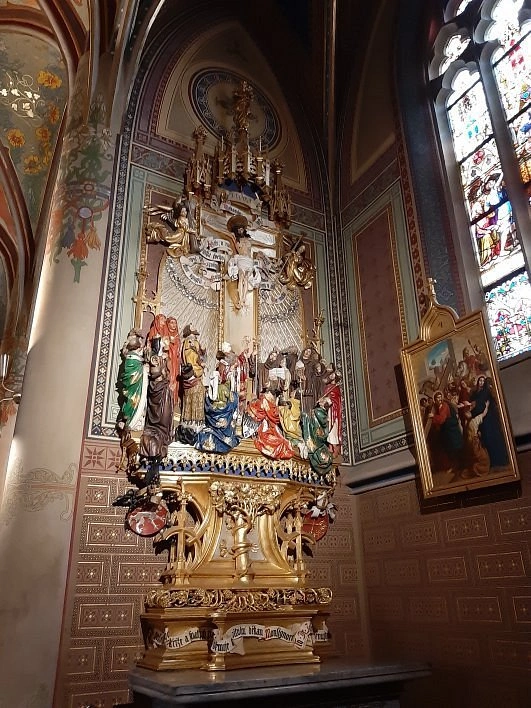
This church was established in 1070 by King Vratislaus II as part of the brand-new Vyehrad Chapter. It was initially solely dedicated to St. Peter, and later St. Paul was added as a patron. The original structure was Romanesque, and it was a straightforward, sturdy structure typical of its time. The first big change came in 1129, under Prince Soběslav I, who rebuilt and expanded the church. It didn’t stay that way for long. In 1249, a serious fire caused heavy damage to the building. Around 1330, as a result of this, the church underwent a significant Gothic reconstruction that completely redesigned it. When finished, it stretched about 110 meters long, making it the largest sacred building in Prague at the time. In 1369, during the reign of Emperor Charles IV, the church saw another round of improvements. A new layout with three naves, a short presbytery, side chapels, and a vestibule gave the interior a more complex and impressive feel. Jumping ahead to the second half of the 16th century, the nave was vaulted, which helped open up the space and create a more soaring interior. After that, the basilica underwent a Baroque transformation from 1707 to 1729. This period brought a new facade and a redesigned vault for the presbytery. Around 1740, the Šancovská Chapel was built, adding another important feature to the church. But the most dramatic changes came in the late 19th and early 20th centuries. Between 1885 and 1887, architect Josef Mocker led a thorough neo-Gothic renovation that gave the basilica much of its current look. Later, in 1902–1903, František Mikš designed the impressive facade we see today. Along with this, the church received two tall towers, each reaching 58 meters, which have become a defining part of Prague’s skyline. At the same time, the old Baroque bell tower, which dated from 1678, was removed.
From 1981 to 1994, the basilica underwent major renovations. This wasn’t just surface work archaeologists also carried out surveys to learn more about the site’s past. In 2001, the church installed 18 new bells in the towers, adding to the two original Baroque bells still in place. Every day, this carillon now plays different melodies that reflect Vy’ehrad’s character and the church calendar’s rhythms. In 2003, the church was honored by Pope John Paul II, who elevated it to the status of a minor basilica a recognition of its religious and historical importance. Today, the basilica is going through a big restoration project, focusing on the roof. Years of weather have caused leaks and damage, so the original slate tiles are being replaced with new ones imported from the United States and Spain. The restoration follows the original designs made by Josef Mocker, ensuring the church keeps its historic character. It is anticipated that this project will cost around 45 million Czech crowns. The Ministry of Culture and the Prague City Council, as well as donations from the general public, provide funding. Funds have also been raised by selling commemorative items. The restoration is planned to be finished by 2029, promising to preserve this beautiful landmark for generations to come.
Architecture of Basilica of Sts. Peter and Paul, Prague, Czechia
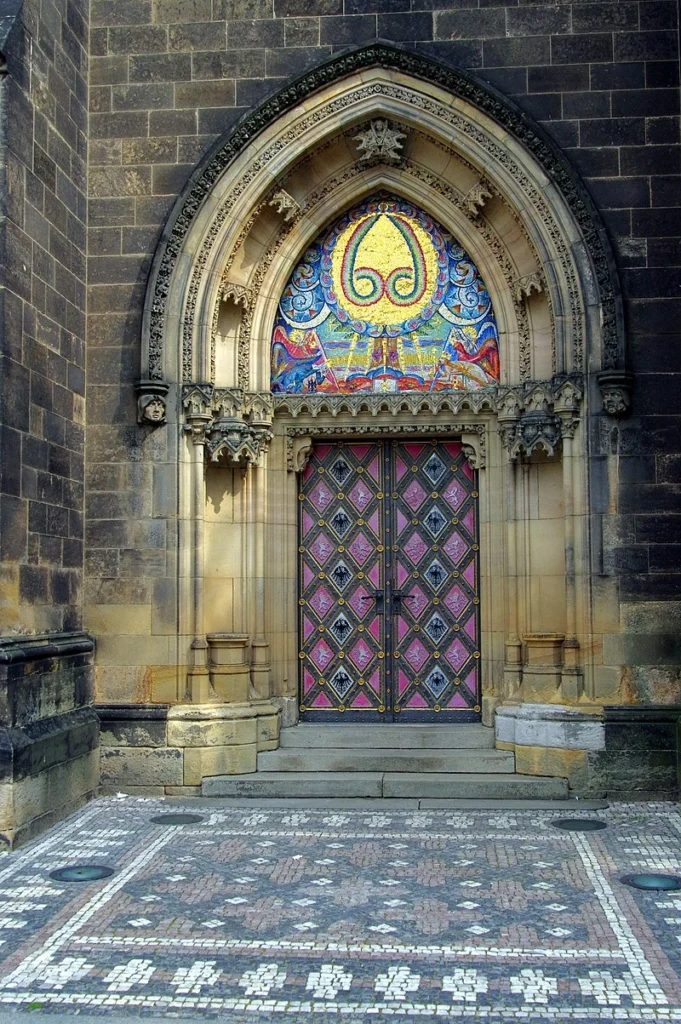
Architectural style: Gothic Revival architecture
Burials: Vratislaus II of Bohemia
Exterior
The church you see today is a neo-Gothic, three-aisled pseudo-basilica with two impressive towers on the west side. These twin towers are quite monumental and really stand out, shaping the skyline of Vyšehrad and adding to one of Prague’s most famous panoramas. There are three large cathedral portals on the western facade, each with symbols for the province and church chapter. Above the central doorway, there’s a relief in the tympanum, while the side portals feature modern mosaics showing the Greek letters alpha (α) and omega (ω), created by artist Lumir Sindelar. Next to the northern portal, you’ll find a memorial plaque honoring the baptism of 14 Czech princes in Regensburg back in 845. This plaque was made by Czech sculptor Josef Kadlcik in 1941. The same one can be found in the church of St. John in Regensburg itself. The text on the plaque is written in Latin, Czech, and German, symbolizing the connection between the places. The basilica was built between 1887 and 1903. The original architect, Josef Mocker, unfortunately passed away before it was finished. His partner, Frantisek Miks, completed the work, making some changes to Mocker’s designs for the facade and towers.
The main structure includes a large central nave flanked by two side aisles. A large choir area with a sanctuary and an apse can be found at the east end. Off to the sides, you’ll find two smaller rooms: the sacristy and a chapel dedicated to Our Lady of the Ramparts, known locally as Panna Maria Sancovska. One thing you won’t see here is a transept the church is long and vertical in shape, with cross-vaulted ceilings. The pointed, arched windows are filled with stained glass, letting in soft, colorful light. Not far from the church, beyond the cemetery walls, archaeologists uncovered the foundations of the old Gothic church’s apse. Interestingly, the old and new apses share the same style and number of supporting buttresses. The three vestibules and the two tall towers, separated by a sharp triangular gable, dominate the western facade when viewed from the rear. The main tympanum over the central door shows a relief of Jesus standing with his apostles. Below them is the archangel Michael, standing between two groups of people those being welcomed to heaven by angels, and those suffering because of sin. At the top of the gable, sculptures of Saints Peter and Paul stand alongside angels and Jesus. A unique feature of the basilica is the design of its spires. They’re hollow with slender openings that make the towers look light and graceful. Their shape is said to resemble the conical flowers of chestnut trees that grow along the walkways around Vysehrad. The spires and the triangular gable between them are decorated with petal-like finials, which further strengthen this floral inspiration.
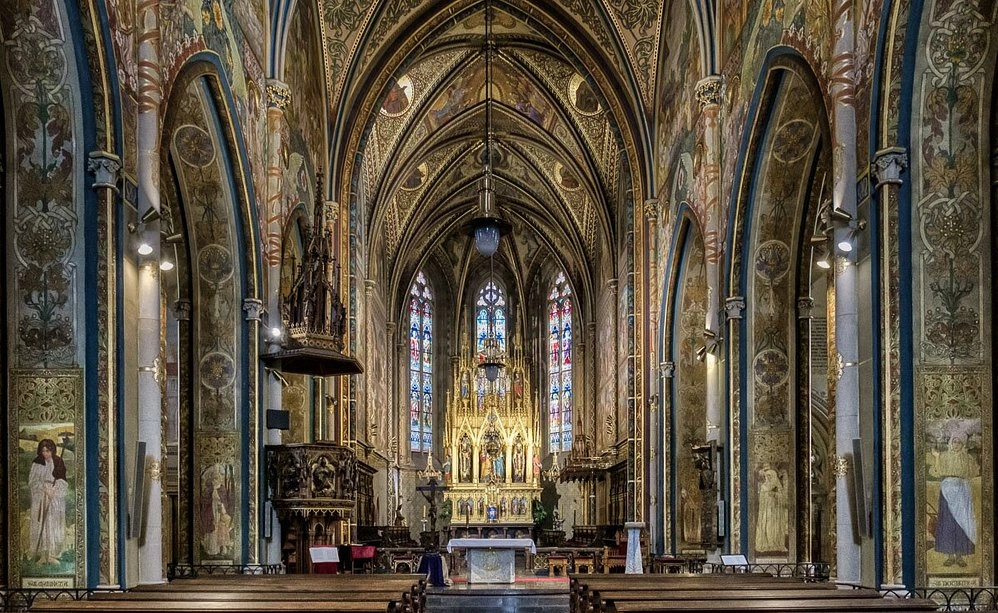
Interior of the Basilica of St. Peter and St. Paul
Stepping Inside the Church
Once you’re inside, the whole space just opens up. The church has a big main nave with two smaller ones on the sides, and everything’s covered with these high, vaulted ceilings. You’ve got these pillars running down the middle, and painted on them is a full cycle of saints the style’s very Art Nouveau, and it gives the place this dreamy, almost storybook feel. On the west side, there’s a vestibule where you come in, and above that is a music gallery. The east side holds the presbytery, which is the main part of the altar area. To the left of that is the sacristy, and to the right is the chapel of Our Lady of Sancovska.
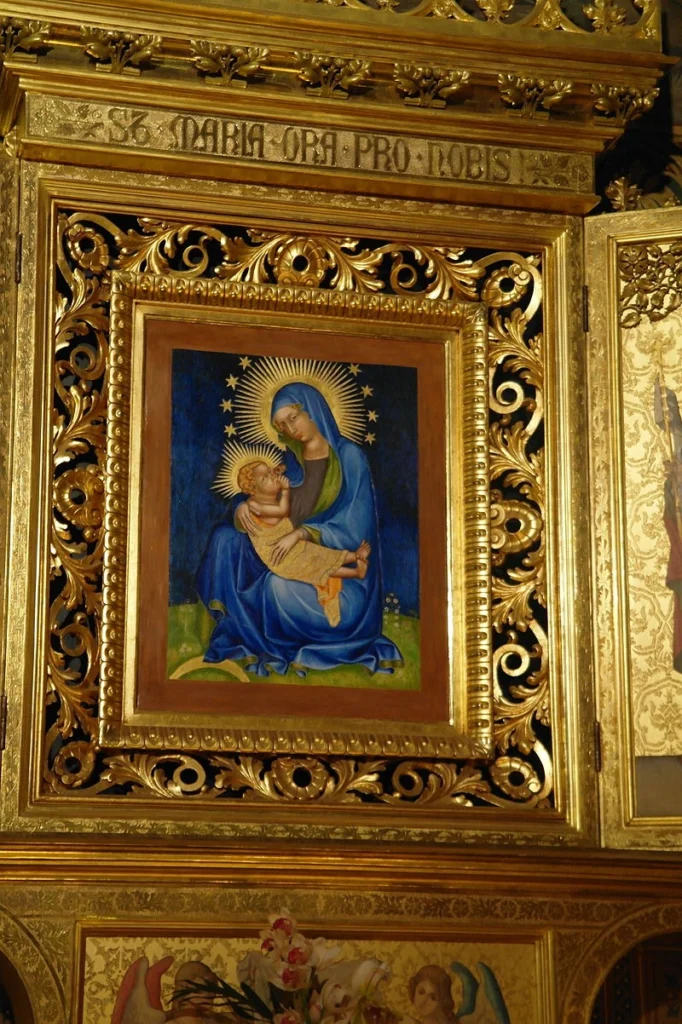
The Chapel of Our Lady of Sancovska
This small side chapel has a wooden statue of the Virgin Mary holding baby Jesus. It’s old, painted in soft Baroque colors, and people believe it might have healing powers. In one corner, there’s a glass box built into the wallit holds bones that are believed to be from the Přemyslid dynasty. Their original tomb was destroyed back in 1420, and the remains were scattered across the cemetery. Some of them ended up here.
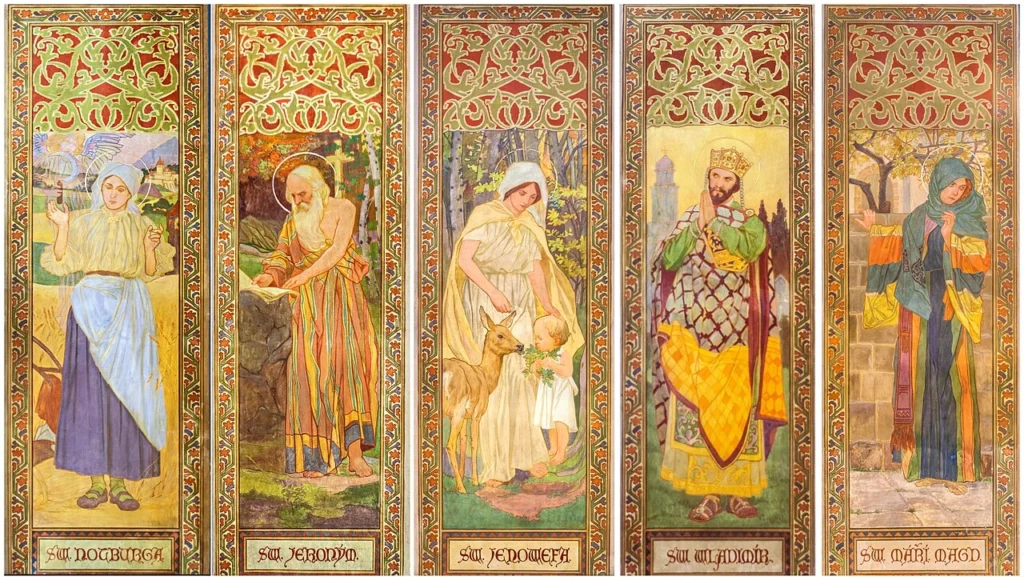
Paintings and Frescoes Everywhere
The inside is full of little chapels, each one different. There are six side chapels total, most with altars dedicated either to Mary or various relics. Some of the walls still have the original Gothic frescoes you can spot one of Mary with the baby Jesus, and another of St. George, especially in the chapel of St. Joseph near the entrance to the Virgin Mary chapel. Above the sacristy doorway, there’s an old Baroque painting that shows the church from how it looked way back, along with a reference to this Prague legend about the Devil’s Column which is now sitting in Karlach Park not far from the church.
A Mix of Styles and Stories
What’s interesting is that the church is kind of a mash-up of different art and architecture styles. Baroque paintings from the 1600s are hanging in some of the side chapels they used to be part of the older altars and were made in the workshop of a Prague painter named Jan Onghers. Additionally, there is a replica of the well-known “Rain Madonna” from the 1980s; however, the original, which features a silver cloak, can be found in the Monastery of St. Agnes.
The Neo-Gothic Makeover
Most of the church’s current interior came from a major redesign in the late 1800s. The walls and ceilings are totally decked out covered in murals, decorative patterns, and painted saints. This was done by a few artists, including Frantisek Urban and his wife Marie, along with some help from painters like Karl Jobst and Antonin Krisan. The stained glass windows are really cool too. Each one shows Jesus in front of a different Gothic or neo-Gothic church, almost like a tribute to Gothic architecture itself. Up in the presbytery, there’s a big mural telling the story of Saints Peter and Paul. And in the main nave, there’s one showing Jesus. These were designed by František Sequens.

The Altar, the Organ & the Details
The main altar is this tall, detailed neo-Gothic piece, carved in 1887 by a guy named Josef Hrubes, based on plans by Josef Mocker (the same architect who redesigned most of the church). It’s got statues of St. Peter and St. Cyril and Methodius are positioned on either side of Paul in the middle. Above the main entrance, there’s a huge pipe organ from 1903. It’s got 2,500 pipes, 49 stops, and three keyboards. It’s as dramatic as you’d expect in a place like this it matches the tall towers outside.
Hidden Treasures
To the left of the entrance, there’s a small room where they keep some of the church’s treasures old liturgical items, some from as far back as the 1300s and 1500s, though most are from the 1800s and 1900s. They give you a good sense of how powerful and rich the Vysehrad Chapter used to be.
A Living Museum of Art
Everything about the interior tells a story not just about religion, but also about art and Czech history. The place is like a live museum of Gothic, Baroque, and Art Nouveau styles, all mixed together. Even the benches where people sit are carved with oak leaves, tying into this forest-like color scheme. There’s a lot of green and brown, especially in the ceiling, which is painted a deep green that feels like you’re under a tree canopy. It’s peaceful, detailed, and kind of magical.
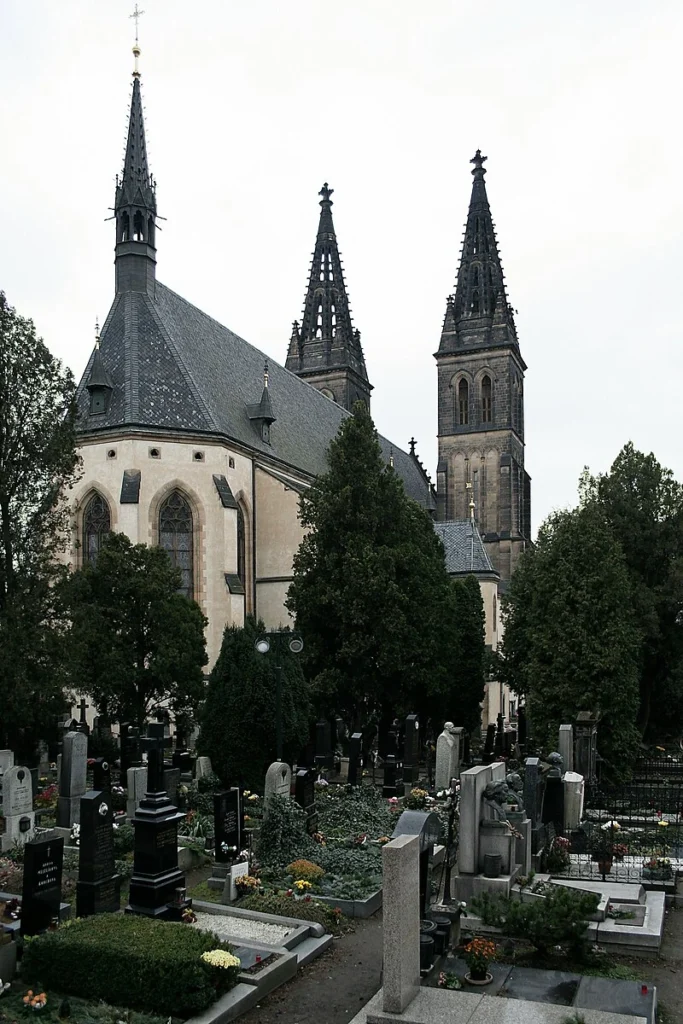
Vysehrad Cemetery
Since the Middle Ages, there have been four identified cemeteries in the Vyšehrad area at the Rotunda of St. Martin, in front of the Basilica of St. Lawrence , at the Church of the Beheading of St. John the Baptist, as well as in the St. Paul and Peter, who served for the longest time. It was not abolished during the Josephine reforms because it was sufficiently far from the city (over 500 steps) and was thus granted special permission by an official decree in 1785. The cemetery was divided into several parts. Priests, nuns and higher clergy were buried in the western part in nine separate sections. Later, school and hospital sisters found their final resting place here. This part at the entrance on the western side, where the religious sisters (Vorsilka, Bartholomew, Redemptorists) are buried, has been preserved, separated by a lattice. The eastern part was reserved for the Jesuits, who in the 17th-18th centuries took care of those infected with the plague.
Feast Day
Feast Day : 29 June
The feast day of Saints Peter and Paul, the patrons of the Basilica in Vyšehrad, Prague, is celebrated on June 29th each year. On this day, special Masses and ceremonies are held to honor these important apostles. It’s a significant day for the church and its visitors, marking the legacy of the saints and the long history of the basilica.
Church Mass Timing
Monday & Wednesday to Friday : 06:00 PM
Saturday : 08:00 AM
Sunday : 8:30 AM, 9:30 AM
Church Opening Time:
Monday to Saturday : 10:00 am – 5:00 pm
Sunday : 10:30 am – 5:00 pm
Contact Info
Address : Basilica of Saints Peter and Paul
Štulcova, 128 00 Praha 2-Vyšehrad, Czechia
Phone : +420 224 911 353
Accommodations
Connectivities
Airway
Basilica of Sts. Peter and Paul, Prague, Czechia, to Václav Havel Airport Prague, distance 34 min (17.9 km) via Nebušická.
Railway
Basilica of Sts. Peter and Paul, Prague, Czechia, to Hlavní nádraží Nové Město Railway Station, distance between 20 min (4.1 km) via Rašínovo nábř.

